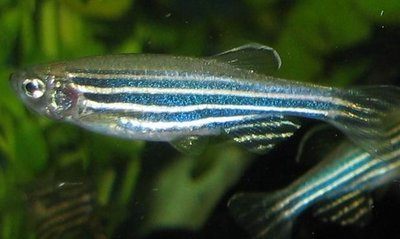Study of Spinal Cord Repair in Zebrafish
Author: Genetics Society of America
Published: 2012/07/07 - Updated: 2022/05/05
Category Topic: Spinal Cord Injury (SCI) - Academic Publications
Page Content: Synopsis - Introduction - Main
Synopsis: Study on mechanisms of spinal cord repair in zebrafish, which can regenerate their spinal cord following an injury. After a spinal injury, the zebrafish nervous system cells called glia are activated and flood the area to seal the wound to protect the brain and spinal cord.
Introduction
Yona Goldshmit, Ph.D., is a former physical therapist who worked in rehabilitation centers with spinal cord injury patients for many years before deciding to switch her focus to the underlying science.
Main Content
"After a few years in the clinic, I realized that we don't really know what's going on," she said.
Now a scientist working with Peter Currie, Ph.D., at Monash University in Australia, Dr. Goldshmit is studying the mechanisms of spinal cord repair in zebrafish, which, unlike humans and other mammals, can regenerate their spinal cord following injury. On June 23 at the 2012 International Zebrafish Development and Genetics Conference in Madison, Wisconsin, she described a protein that may be a key difference between regeneration in fish and mammals.
One of the major barriers to spinal regeneration in mammals is a natural protective mechanism, which incongruously results in an unfortunate side effect. After a spinal injury, nervous system cells called glia are activated and flood the area to seal the wound to protect the brain and spinal cord. In doing so, however, the glia create scar tissue that acts as a physical and chemical barrier, which prevents new nerves from growing through the injury site.

An adult female zebrafish.
One striking difference between the glial cells in mammals and fish is the resulting shape: mammalian glia take on highly branched, star-like arrangements that appear to intertwine into dense tissue. Fish glia cells, by contrast, adopt a simple elongated shape - called bipolar morphology - that bridges the injury site and appears to help new nerve cells grow through the damaged area to heal the spinal cord.
"Zebrafish don't have so much inflammation and the injury is not so severe as in mammals, so we can actually see the pro-regenerative effects that can happen," Dr. Goldshmit explained.
Studies in mice have found that mammalian glia can take up the same elongated shape, but in response to the environment around the injury, they instead mature into scar tissue that does not allow nerve regrowth.
Dr. Goldshmit and her colleagues have focused on a family of molecules called fibroblast growth factors (Fgf), which have shown some evidence of improving recovery in mice and humans with spinal cord damage. The Monash University group found that Fgf activity around the damage site promotes the bipolar glial shape and encourages nerve regeneration in zebrafish.
Preliminary results in mice show that Fgf injections near a spinal injury increase both the number of glia cells at the site and the elongated morphology. Their evidence suggests that Fgfs may work to create an environment more supportive of regeneration in mammals as well, and could be a valuable therapeutic target.
Spinal injury patients usually have few options, Dr. Goldshmit emphasized, and development of new, biologically based approaches will be critical.
"This is a nice example of how we can use the zebrafish model," she said. "When we learn from the zebrafish what to look at, we can find things that give us hope for finding therapeutic approaches for spinal cord injury in humans."
Genes That Repair the Spinal Cord in Fish Are Also Present in Humans
Attribution/Source(s): This quality-reviewed publication was selected for publishing by the editors of Disabled World (DW) due to its relevance to the disability community. Originally authored by Genetics Society of America and published on 2012/07/07, this content may have been edited for style, clarity, or brevity.